Loyalty Programs
They’re popular in grocery stores and other retail outlets, but loyalty and frequent shopper programs are gaining recognition within the garden center industry. Just like the name implies, that group of loyal and frequent shoppers is a big asset to your company. You provide wonderful customer service, quality product and knowledgeable staff to all of your customers, no matter how often they shop or how much they spend. Remember that 80/20 rule? What are you doing for that 20 percent to make them come back again and again and spend more and more? How do you make a house a mansion? Expand; a loyalty or frequent shopper program can do just that — expand your business.
“You could throw out a coupon to everyone in town, but these programs reward the people who are actually your premium customers,” says Brian Wheat, CEO of Lafayette Florist Gift Shop & Garden Center, Lafayette, Colo. Lafayette has a Frequent Flower Program that they’ve been enforcing for about 10 years. Customers are given a punch card at their first purchase. With any and every purchase the card is punched once, except for Double Punch Tuesdays, when customers get two punches for one purchase. At 10 punches, customers receive a free bouquet of flowers or $5 off their next purchase. Lafayette redeems approximately 40-50 cards each month.
Summerwinds Nursery has stores throughout California, Arizona and Missouri and created its Gardener’s Rewards Club for its loyal customers. When a customer’s cumulative purchases reach $300, a 5-percent discount coupon is issued. At $600, a 10-percent discount coupon is issued; $1,000, a 15-percent discount coupon; and at $2,500, a 20-percent discount coupon. All coupons are good toward future purchases. Other benefits of the program include E-mail newsletters with gardening advice and advance notice of in-store seminars, E-mail notification of members-only sales and printable discount coupons from its Web site.
The program works by the customer signing up through a flyer or the Web site. Each time a purchase is made the cashier asks for the customer’s phone number, which pulls up account activity and then the purchase is logged in.
Lafayette also created another program about three years ago called Wooden Nickel Days, a program that starts at the end of April and continues for the next seven weeks. During these busy weeks, every time a customer spends $50 they are given a wooden nickel worth $5 off their next visit. This program was designed to bring customers back into the store during the not-so-busy summer months. It worked; by the end of September, 48 percent of the wooden nickels were redeemed. The average sale on those return visits was $56. Also upon redemption, Lafayette is able to log the customer for future marketing plans.
Take advantage of your program plans plans
Lafayette has the right idea; through the application process and purchase logs, you are able to make business decisions based on demographics. Homestead Gardens, Davidson, Md., focuses heavily on this with its Garden Club. When the application for the club is filled out, entered into the database and the club card is issued and used, Homestead is able to track the likes and dislikes of its customers. Á
“It also gives us information about our consumer that we don’t really have available any way else,” says Tim Hamilton, marketing director at Homestead. “Larger research firms are excellent with their research methods and what they can design within businesses, but for retailers like us, who are not chains, we have a problem getting to know our consumer, because we can’t use research like that. So, this is a great way for us to see when people are buying, who’s buying, what they’re buying, how often they’re buying and how much they’re spending.”
Homestead is also targeting a younger group with its Kids Club, which was a spin-off of the Garden Club program. “They’re our future customers,” says Hamilton. “And we want to find and understand them early.”
But the big business for Homestead is the Garden Club, which offers members mailings with shopping incentives and event information; newsletters containing gardening information, coupons and news about the store all mailed to their homes three times per year; seminar discounts; extended tree and shrub guarantees; and soil-testing discounts. Homestead also issues gift certificates to members based on points earned through purchases. One point equals $1. So for 500-999 points, the member receives a $10 certificate; for 1,000-1,999 points, $25; for 2,000-2,499, $50 and so on. Customers soon get the idea and start spending more. “Consumers know how these programs work,” says Hamilton. “They are somewhat trained for this [a loyalty program]; they expect it, so it only seems natural for us to have such a program.”
What you get
Another benefit of a loyalty program’s database is lower ad costs. “One of our goals was to lower our advertising cost by advertising to our target consumer,” says Bill Stacy, operations manager at Ray Wiegand’s Nursery, Macomb Township, Mich. “If you put an ad in the newspaper, it goes to say 20,000 people. Of that 20,000 you may capture 1,000 of them; for less cost you can E-mail the 1,000 and then put an ad in the newspaper once a month for those who don’t know you’re there.” Wiegand’s began its Loyalty Club about nine months ago, and it already has more than 17,000 members who made up 50 percent of sales in 2003. Gross margin percentage on loyalty club member purchases was 2 percent higher than regular purchases even taking into account discounts, reward certificates and coupons sent out. “We wanted to take care of our loyal customers, find a way to communicate with them, reward them, update them on happenings within the store and keep them as loyal customers,” says Stacy
The program consists of a free membership, then receiving one “Loyalty Card” and two key tags. With this, customers are given special pricing on unadvertised items throughout the store, information for upcoming special offers and promotions, invitations to special events and exclusive mailings. Also, for every $200 increment the customer spends in a quarter, they receive a $5 loyalty certificate. For example if a customer spends $650 in the first quarter of the year, she’d receive a $15 loyalty certificate, and the remaining money would carry over to the next. “We’ve sent certificates as high as $250 out,” says Stacy. “The first quarter we had a 40-percent return rate and the second quarter a 30-percent return rate.”
What not to do
Stacy advises those looking to start a program to make a plan and stick to it. “Come to a consensus on what the program is going to be, so you don’t have to change it whatsoever,” he says. “We talked to many nurseries, read books and did a lot of homework before we rolled it out. One of the most annoying things for a customer is to enroll in a program then have it quit on them. Some nurseries we talked to had a 4 or 5-percent return and discovered it was too expensive and dropped it. Right there the customer is very upset.”
Another touchy subject is privacy and spam. Every garden center I talked to makes it clear to their customers that they will not sell information, which is important to people these days. Another consideration is unnecessary contact. None of us like getting those phone calls at dinner time or sorting through the inbox to find important E-mails. “Keep E-mails spaced apart,” Stacy says. “I sent an E-mail for a class that normally attracts 20 people, but we had 80 people show up. When I addressed the class, they told me they loved getting the E-mail, but ‘don’t send me too many or I’ll block you.'”
More Words of Advice
Any advice always includes plan and research, especially when it comes to your customers. “It’s not a cheap endeavor; not only do you have to buy the cards and applications, you have to pay someone to process them and the computer programs,” says Hamilton. “It’s something that takes a lot of time and effort.”
“See how it’s going to fit in with the rest of the system,” he says. “Also think about who’s going to process this information, how are you going to track the information, what are you going to do with the information? These are all things you have to consider first.”

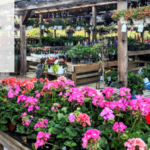


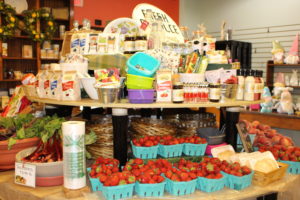




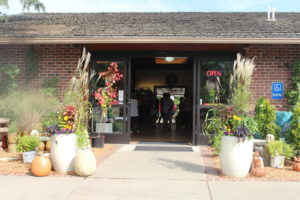
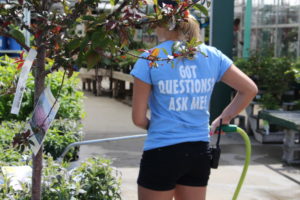

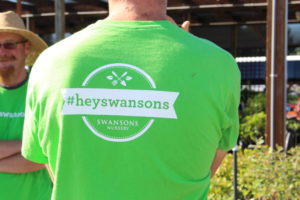



 Videos
Videos





